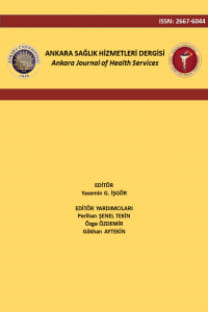ORTOPEDİK ÖZÜRLÜLERDE REKREASYONEL AKTİVİTELER VE SPOR
ürlülerde; özüre bağlı fiziksel, duygusal ve sosyal problemler gelişebilmektedir. Bu problemler, kişinin ailesi ve çevresiyle olan iletişimlerini olumsuz etkileyebilir, fiziksel çevreyi öğrenme ve keşfetmesini engelleyebilir. Çeşitli sporlar ve rekreasyonel (eğlendirici ve vakit geçirici) aktiviteleri kapsayan destekleyici organizasyonlar ve rehabilitasyon programları ortopedik özürlülerde görülen olumsuzlukları minimale indirerek, yaşam kalitesini artırır. Spor, pek çok özür grubunda olduğu gibi ortopedik özürlüler için de en iyi rekreasyonel aktivitedir.Amatör ya da profesyonel olarak ortopedik özürlüler çeşitli sporlara katılabilirler. Spor, özürlünün rehabilitasyonuna önemli katkılar sağlar. Ortopedik özürlünün kuvvetinin, dengesinin, koordinasyonunun, enduransının eğitimine yani kısaca fiziksel uygunluğunun geliştirilmesine yardım eder. Spor, kişinin fonksiyonel kapasitesini artırır, çevreye uyumunu olumlu yönde etkileyerek yaşamdan zevk almasını sağlar
Anahtar Kelimeler:
Özürlü, Spor, Rehabilitasyon, Rekreasyonel aktiviteler
RECREATIONAL ACTIVITIES AND SPORTS IN DISABLED PEOPLE
Physical, emotional and social problems related to the defect can develop in disabled. These problems can effect negatively the communication between the disabled people and both their family and social environment, and can hinder to learn and explore the physical environment. Various sports, supportive organizations included recreational activities (amused and passed time) and rehabilitation programs increase the quality of life as decrease the negative condition appeared in disabled people. Sport is also the best recreational activities for orthopedic disabled people like many groups of disable. As an amateur or professional orthopedic disabled can attend various sports. Sport provides important supplements to rehabilitation of disabled. Its helps the training of the strength, balance, coordination and endurance of orthopedic disabled, that is, briefly it helps the progress of their physical fitness. Sport increases functional capacity of the person, provides to take pleasure from her/his life as effects positive their social adaptation.
Keywords:
Disabled, Sports, Rehabilitation, Recreational activities,
___
- Ergun N, Baltacı G. Spor yaralanmalarında fizyoterapi ve rehabilitasyon prensipleri. Hacettepe Üniversitesi Fizik Tedavi ve Rehabilitasyon Yüksekokulu Yayınları:20, 2.Basım, Merdiven Reklam-Tanıtım, Ankara, 2006:137-156.
- Tasiemski T, Bergström E, Savic G, Gardner BP. Sports, recreation and employment following spinal cord injury--a pilot study. Spinal Cord. 2000;38(3):173-84.Widman LM ,
- Taub D, Blinde E, Greer K. Stigma management through participation in sport and physical activity :experiences of male collage students with physical disabilities. Hum Relat. 1999;52:1469-1484.
- Jacobs PL, Nash MS. Modes, benefits, and risks of voluntary an delectrically induced exercise in persons with spinal cord injury. J Spinal Cord Med. 2001;24(1):10-8.
- Sam C Chan, Alice P Chan. User satisfaction, community participation and quality of life among Chinese wheelchair users with spinal cord injury:a preliminary study. Occup Ther Int. 2007;14(3):123-143.
- Stotts KM. Health maintanance: paraplegic athletes and nonathletes. Arc Phys Med Rehabil. 1986;67:109- 114.
- Lewins SM, Redenbach DM, Dyck I. Individual and societal influences on participation in physical activity following spinal cord injury: a qualitative study. Phys Ther. 2004;84(6):496-509.
- Widman LM, McDonald CM, Abresch TR. Effectiveness of an upper extremity exercise device integrated with computer gaming for aerobic training adolescents with spinal cord dysfunction. JSCM. 2006; 29:363- 370.
- Muraki S, Tsunawake N, Hiramatsu S, Yamasaki M. The effect of frequency and mode of sports activity on the psychological status in tetraplegics and paraplegics. Spinal Cord. 2000;38(5):309-14.
- www.paralympic.org
- www.besf.org.tr
- Yayın Aralığı: Yılda 2 Sayı
- Başlangıç: 2000
- Yayıncı: Ankara Üniversitesi
Sayıdaki Diğer Makaleler
ORTOPEDİK ÖZÜRLÜLERDE REKREASYONEL AKTİVİTELER VE SPOR
KEZBAN BAYRAMLAR, SPORTS IN DISABLED PEOPLE
Mehmet ALTINÖZ, Hasan TUTAR, THE SERVICE SECTOR
Hakkindaki BİLGİ, FADİME ÜSTÜNER, AKGÜL UYSAL, Bariş KAYA
GERİATRİK AMPUTELERDE DEMOGRAFİK ÖZELLİKLERİN İNCELENMESİ: RETROSPEKTİF BİR ÇALIŞMA
ERKEN PROTEZ UYGULAMALARININ ETKİLERİNİN ARAŞTIRILMASI
Kezban BAYRAMLAR, İmmediate Prosthetic FITTING
BİR GRUP ERGENİN AİLE İŞLEVLERİNİN DEĞERLENDİRİLMESİ
Kezban BAYRAMLAR, Hicran KUMBAS, Olcay ÇAM, Gülseren KESKİN, Questionnaire Form
